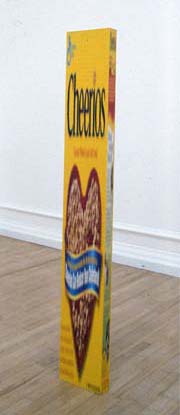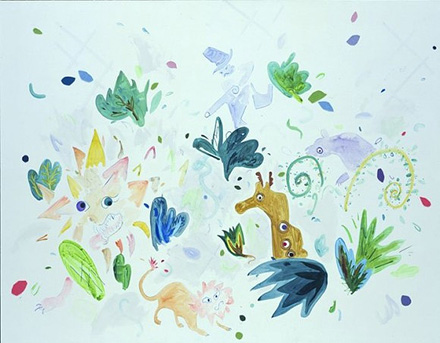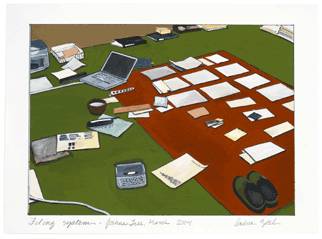 Tom Friedman, "Untitled,"
1995, pencils. Tom Friedman, "Untitled,"
1995, pencils.
| ||||||||
|
Artists under the Influence When rising talents encounter their artist/muses, creative sparks fly in both directions. BY DOROTHY SPEARS
Years later, after seeing Friedman's first one-person show at Feature Gallery in Manhattan, it was Close's turn to be impressed. "I just flipped when I saw it," the older artist recalls. "One of the things I've been chasing my whole life is this idea of 'before it looks like art.' The first time I saw a Jackson Pollock, when I was 11, it didn't look like art yet." The same thing happened, Close says, when he saw Frank Stella's black stripe paintings in the early 1960s. When Warhol showed his Brillo boxes at the old Stable Gallery, it made the space look like a supermarket storeroom, Close notes. "To me, these are the most interesting moments in art—when it doesn't look like art yet. I had the same feeling when I went into Tom's show. Something about the work was so personal and idiosyncratic."
A similar attitude toward painting also marks the relationship of Mary Heilmann and Laura Owens. Recalling the first time she met Heilmann, Owens, then a 24-year old graduate student at Cal Arts in Valencia, California, says it was that attitude, more th an her aes thetic interests, that impressed her. "Mary was very confident with her painting but not heavy-handed," says Owens, now 36, who lives and works in Los Angeles. "She had a sort of casual approach, as if anything you wanted to do, you could do it." Owens still remembers the profound impact of Heilmann's first visit to her studio. Heilmann had come to lecture, as part of Cal Arts' visiting artist program. "Mary was very encouraging," Owens says. "She was so excited and happy to see my work. I've always felt she was a very strong role model." Heilmann , who was aware that Owens viewed her as a mentor, says of the younger artist: "I think Laura's a genius." |








